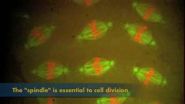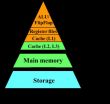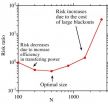(Press-News.org) PHILADELPHIA (April 8, 2014) – The cartoon character Homer J. Simpson once said "Alcohol: The source of, and solution to, all of life's problems."
The sage of the ubiquitous and fictional town of Springfield may have hit the nail on the head when it comes to human immunodeficiency virus (HIV) and sexually transmitted infections (STIs) counseling and prevention. The more you drink and/or the more sex partners you have, the less likely you are to engage in HIV-prevention programs.
This rather grim assessment came about from the study, "Barriers to accessing HIV-prevention in clinic settings: Higher alcohol use and more sex partners predict decreased exposure to HIV-prevention counseling." It was published online this month in the journal Psychology Health & Medicine by Kristina Wilson and Dolores Albarracín, both with the University of Pennsylvania's Annenberg School for Communication. Wilson is also affiliated with the Office of Performance Improvement, Florida Department of Health, Duval County, Jacksonville, Fla.
"The irony is that the very behaviors that put people at risk for HIV and STIs are the same behaviors that keep people from seeking prevention counseling," says Wilson and Albarracín.
Understanding why someone does – or does not – enroll in a prevention program is a significant piece of information for public health departments. Yet relatively little is known about what motivates individuals to participate in HIV-prevention programs or whether some audiences are more or less willing to take advantage of the HIV-prevention counseling programs commonly provided at health clinics. Understanding motivation is significant since, according to the federal Centers for Disease Control (CDC), approximately 50,000 new HIV infections occur annually.
Wilson and Albarracín's study seeks to determine if number of sex partners and alcohol consumption predict an individual's acceptance of an invitation to take part in HIV-prevention counseling. It draws on previous research that has found individuals to be motivated to seek out information that is consistent with their beliefs and to avoid discrepant messages. For example, individuals with beliefs not favoring condom use think that HIV-prevention counseling programs will force them to change their HIV-relevant beliefs and practices, and these expectations are associated with reduced likelihood of enrollment.
In the new study, the researchers investigated whether similar relations exist between acceptance of HIV-prevention counseling and other sexual risk factors such as number of sex partners (a well-known risk factor for HIV infection) and heavy alcohol consumption, which has been linked to sexually risky behaviors including having sex with multiple partners and engaging in unprotected sex.
The researchers found that participants engaging in the least risky behavior (i.e., individuals reporting no alcohol consumption and few sex partners) were more likely to accept an offer to receive HIV-prevention counseling. They also found that heavy drinking was associated with decreased exposure to HIV-prevention counseling, regardless of the number of sex partners.
"Interventions that jointly target STI prevention and alcohol use are effective for STI risk reduction. However, such programs will be unlikely to reach their potential public health impact if target audiences do not enroll," they conclude. "Understanding barriers to enrollment may be helpful for practitioners at clinics that are interested in making HIV-prevention more appealing to target audiences. As our findings indicated that heavy drinkers were unwilling to enroll in HIV-prevention counseling, finding ways to reduce enrollment barriers among this group could serve a vital public health function."
INFORMATION: END
The double whammy of multiple sex partners and drinking in HIV/STI prevention
Alcohol/sex frequency may cause resistance to HIV-prevention counseling
2014-04-08
ELSE PRESS RELEASES FROM THIS DATE:
Language structure… you're born with it
2014-04-08
Humans are unique in their ability to acquire language. But how? A new study published in the Proceeding of the National Academy of Sciences shows that we are in fact born with the basic fundamental knowledge of language, thus shedding light on the age-old linguistic "nature vs. nurture" debate.
THE STUDY
While languages differ from each other in many ways, certain aspects appear to be shared across languages. These aspects might stem from linguistic principles that are active in all human brains. A natural question then arises: are infants born with knowledge of how ...
Advanced warning systems increase safety at intersections, study shows
2014-04-08
Most drivers have experienced a traffic signal that turns yellow just as they approach an intersection, which makes it difficult for them to decide whether to stop or proceed through it. The wrong choice in this situation, known as the "dilemma zone," may lead to crashes, especially at high-speed intersections.
A major factor making driving difficult is hazards that are sudden and hard to predict. Roadside and in-vehicle display warning systems may help drivers handle these hazards by predicting their occurrence and providing advanced warning to the driver, according ...
Lipid levels during prenatal brain development impact autism: York U study
2014-04-08
In a groundbreaking York University study, researchers have found that abnormal levels of lipid molecules in the brain can affect the interaction between two key neural pathways in early prenatal brain development, which can trigger autism. And, environmental causes such as exposure to chemicals in some cosmetics and common over-the-counter medication can affect the levels of these lipids, according to the researchers.
"We have found that the abnormal level of a lipid molecule called Prostaglandin E2 in the brain can affect the function of Wnt proteins. It is important ...
Kinesin-5 structure opens cancer drug targets
2014-04-08
VIDEO:
Kinesin-5 plays a crucial role in cell division by allow microfilaments to slide past each other. The kinesin-5 structure shows a central rod connecting two motor units that walk along...
Click here for more information.
The structure of a key part of the machinery that allows cells to divide has been identified by researchers at the University of California, Davis -- opening new possibilities for throwing a wrench in the machine and blocking runaway cell division in cancer.
"The ...
Phase II trial of efatutazone shows challenge of matching treatment to population
2014-04-08
Work at the University of Colorado Cancer Center led to phase II trial of efatutazone with erlotinib in patients with refractory non-small cell lung cancer. Results are reported today at the American Association for Cancer Research (AACR) Annual Meeting 2014. While efatutazone did not improve the efficacy of erlotinib in this trial, researchers hope lessons from the trial will allow them to make better future use of the drug or other drugs in its class.
"In oncology and especially in lung cancer, everything is personalized. We're exploring different molecular markers ...
Glucosamine promotes longevity by mimicking a low-carb diet
2014-04-08
Glucosamine has been freely available in drugstores for many decades. It is widely used to treat arthritis and to prevent joint degeneration. Moreover, glucosamine is known to delay cancer growth. In addition, glucosamine reduces metabolism of nutritive sugars, as was already shown some 50 years ago.
In 2007, Michael Ristow showed that too much nutritive sugar shortens the lifespan of roundworms, a widely studied model organism in ageing research. Conversely, impairing carbohydrate metabolism in these worms was capable of extending lifespan [reference 1]. Unfortunately, ...
Future computers that are 'normally off'
2014-04-08
WASHINGTON D.C., April 8, 2014 -- If a research team in Japan gets its wish, "normally off" computers may one day soon be replacing present computers in a move that would both eliminate volatile memory, which requires power to maintain stored data, and reduce the gigantic energy losses associated with it.
Most parts of present computers are made with volatile devices such as transistors and dynamic random access memory (DRAM), which loses information when powered off. So computers are designed on the premise that power is "normally on."
Back in 2000, the concept of ...
Is the power grid too big?
2014-04-08
WASHINGTON D.C., April 8, 2014 -- Some 90 years ago, British polymath J.B.S. Haldane proposed that for every animal there is an optimal size -- one which allows it to make best use of its environment and the physical laws that govern its activities, whether hiding, hunting, hoofing or hibernating. Today, three researchers are asking whether there is a "right" size for another type of huge beast: the U.S. power grid.
David Newman, a physicist at the University of Alaska, believes that smaller grids would reduce the likelihood of severe outages, such as the 2003 Northeast ...
Rice U. study: Creativity and innovation need to talk more
2014-04-08
HOUSTON – (April 8, 2014) – Creativity and innovation are not sufficiently integrated in either the business world or academic research, according to a new study by Rice University, the University of Edinburgh and Brunel University.
The findings are the result of the authors' review of the rapidly growing body of research into creativity and innovation in the workplace, with particular attention to the period from 2002 to 2013.
"There are many of us who study employee creativity and many of us who study innovation and idea implementation, but we don't talk to each ...
The surprising truth about obsessive-compulsive thinking
2014-04-08
Montreal, April 8, 2014 — People who check whether their hands are clean or imagine their house might be on fire are not alone. New research from Concordia University and 15 other universities worldwide shows that 94 per cent of people experience unwanted, intrusive thoughts, images and/or impulses.
The international study, which was co-authored by Concordia psychology professor Adam Radomsky and published in the Journal of Obsessive-Compulsive and Related Disorders, examined people on six continents.
Radomsky and his colleagues found that the thoughts, images and ...
LAST 30 PRESS RELEASES:
Heart-brain connection: international study reveals the role of the vagus nerve in keeping the heart young
Researchers identify Rb1 as a predictive biomarker for a new therapeutic strategy in some breast cancers
Survey reveals ethical gaps slowing AI adoption in pediatric surgery
Stimulant ADHD medications work differently than thought
AI overestimates how smart people are, according to HSE economists
HSE researchers create genome-wide map of quadruplexes
Scientists boost cell "powerhouses" to burn more calories
Automatic label checking: The missing step in making reliable medical AI
Low daily alcohol intake linked to 50% heightened mouth cancer risk in India
American Meteorological Society announces Rick Spinrad as 2026 President-Elect
Biomass-based carbon capture spotlighted in newly released global climate webinar recording
Illuminating invisible nano pollutants: advanced bioimaging tracks the full journey of emerging nanoscale contaminants in living systems
How does age affect recovery from spinal cord injury?
Novel AI tool offers prognosis for patients with head and neck cancer
Fathers’ microplastic exposure tied to their children’s metabolic problems
Research validates laboratory model for studying high-grade serous ovarian cancer
SIR 2026 delivers transformative breakthroughs in minimally invasive medicine to improve patient care
Stem Cell Reports most downloaded papers of 2025 highlight the breadth and impact of stem cell research
Oxford-led study estimates NHS spends around 3% of its primary and secondary care budget on the health impacts of heat and cold in England
A researcher’s long quest leads to a smart composite breakthrough
Urban wild bees act as “microbial sensors” of city health.
New study finds where you live affects recovery after a hip fracture
Forecasting the impact of fully automated vehicle adoption on US road traffic injuries
Alcohol-related hospitalizations from 2016 to 2022
Semaglutide and hospitalizations in patients with obesity and established cardiovascular disease
Researchers ‘listen in’ to embryo-mother interactions during implantation using a culture system replicating the womb lining
How changing your diet could help save the world
How to make AI truly scalable and reliable for real-time traffic assignment?
Beyond fragmented markets: A new framework for efficient and stable ride-pooling
Can shape priors make road perception more reliable for autonomous driving?
[Press-News.org] The double whammy of multiple sex partners and drinking in HIV/STI preventionAlcohol/sex frequency may cause resistance to HIV-prevention counseling



